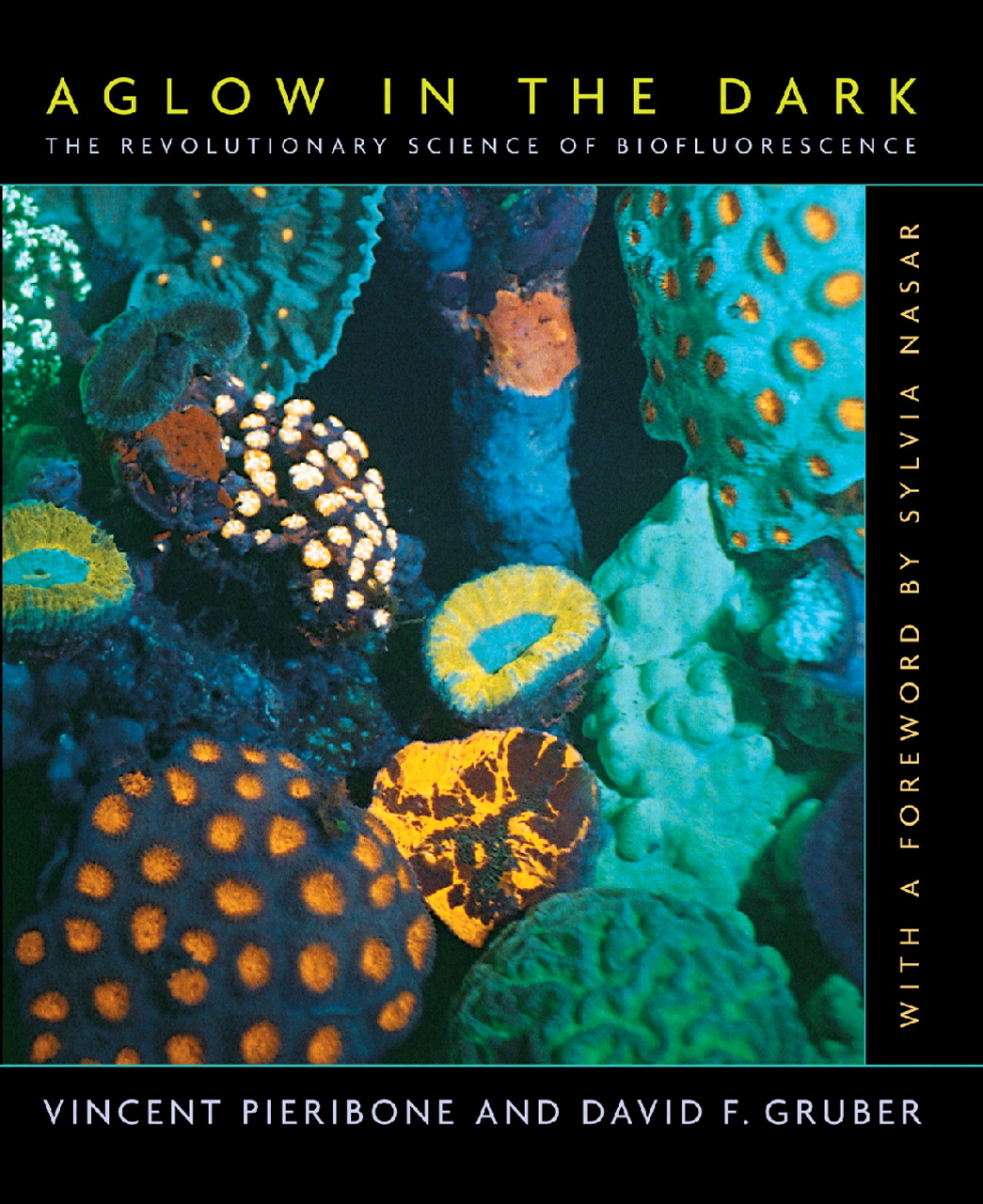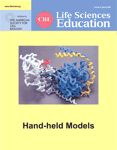It Isn't Easy Glowing Green

The 2005 book, Aglow in the Dark by Vincent Pieribone and David F. Gruber, is a captivating tale of scientists enchanted by luminescent organisms, driven by personal ambition and a fundamental desire to understand nature. Written for a nonscience audience, but detailed enough to hold the attention of a scientific reader, this book is especially timely now that the 2008 Nobel Prize in Chemistry has been awarded to three of the book's stars for their roles in discovering and developing the green fluorescent protein (GFP). Although the story is lively, I was initially drawn to this beautiful book by its appearance. It is compact, glossy, and brightly colored, its cover decorated with fluorescent corals. At its core, this book is about people's fascination with color and light. The colorful layout and numerous photographs acknowledge human attraction to beautiful objects and help the reader relate to the personal stories described in the text.
The story begins in an anonymous laboratory. A scientist gazes at a video monitor that displays images of a living, glowing mouse brain generated using two-photon microscopy. As the narrative unfolds it becomes clear that these miraculous images give insight into the terrible reality of Alzheimer's disease. By the end of the first chapter, the authors have drawn the reader into the history and science of bioluminescence and biofluorescence with the promise that the scientific applications of molecules like GFP will help to explain and prevent human diseases.
After setting the stage in a modern laboratory, the authors go back in time to Aristotle and move forward documenting the history of the investigation of bioluminescence and biofluorescence. Attention is given to the science involved in the historical studies, but the book sets itself apart from other similar accounts by engaging deeply with the emotions and personal experiences of many of the scientists. The most space given to an individual is devoted to Osamu Shimomura, the Nobel Laureate who discovered GFP. The first of two chapters on Shimomura describes his experience as a student in Japan during and immediately following World War II. Shimomura was a high school student in a small town 10 kilometers outside of Nagasaki when the second atomic bomb was dropped on Japan. The moving account of his involvement in caring for victims of the bombing is based on interviews with him conducted 60 years later at Woods Hole, Massachusetts. Even softened by the passage of time, the effect that those post-war months had on him is unmistakable. The remainder of the chapter tells the fascinating story of his circuitous path through the decimated post-war Japanese university system, his isolation of luciferin from the crustacean, Cypridinia hilgendorfi, and his travel to Princeton as a Fulbright scholar. Living in Seattle, I was especially interested in the next chapter, which describes Shimomura's time at a marine laboratory in Friday Harbor, Washington, where he and others first isolated GFP from thousands of native jellyfish.
The remainder of the book feels like it moves in fast-forward, chronicling the development of GFP as a tool for scientific discovery using the power of the emerging field of molecular biology. Although this section of the book also touches on the lives of scientists including Nobel Prize winners Martin Chalfie and Roger Tsien, the growing cast of characters means that less attention is given to exploring the personal motivations of each scientist than in earlier chapters. The result of this streamlining is a narrative that highlights major achievements while only hinting at the story behind the discoveries. The last three chapters, which focus on fluorescent corals and the frontiers of neurobiology, relate directly to the research interests of the authors. Although the subject matter covered in these chapters is engaging and the pictures of both corals and neurons are dazzling, this section of the book feels at times disjointed and disconnected from earlier chapters.
Because of the broad range of scientific and social issues addressed by Aglow in the Dark, it would be an ideal focal point around which to build a biology or biochemistry course. Such a course could be appropriate for science majors or nonscience students. Instructors could easily link chapters of the book to scientific content including the electromagnetic spectrum, the central dogma, cell biology, genetic engineering, and neurobiology. The book also provides an entry into a discussion of ethical issues that relate to science and society. To what extent do scientists and medical professionals have a responsibility to advocate for environmental protection given the scientific and medical value of natural products? How is ownership of intellectual property defined especially when scientific discoveries lead to significant profit? How should society balance the potential for medical progress with controversial applications of technology? Personally, I believe that consideration of such questions is an important part of science education, yet I find it challenging to integrate these ideas into the classroom. Reading Aglow in the Dark with students would be a great way to enter into a conversation about the personal and ethical side of science with the added bonus of an informative, engaging, and scientifically relevant story.



